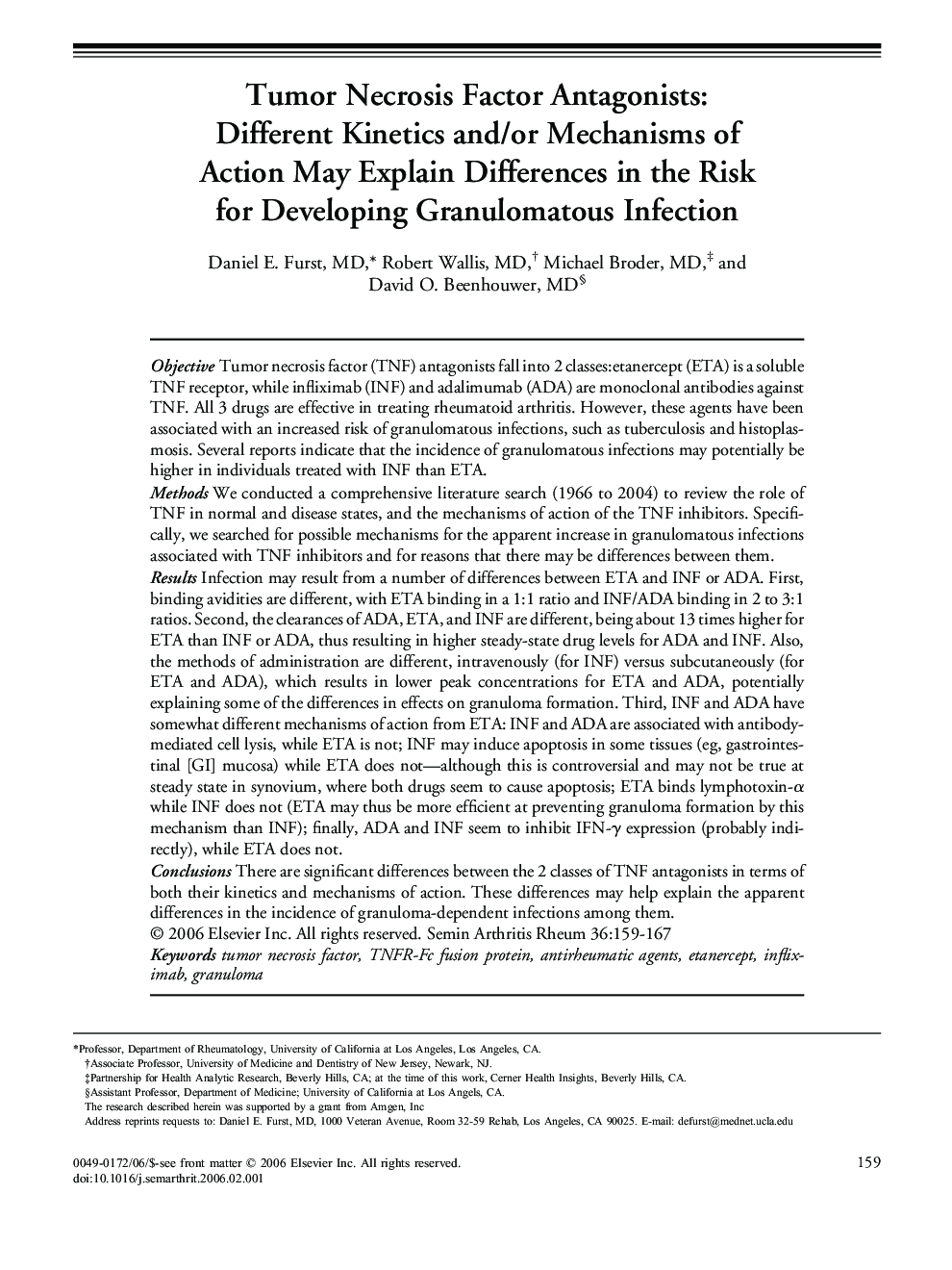| کد مقاله | کد نشریه | سال انتشار | مقاله انگلیسی | نسخه تمام متن |
|---|---|---|---|---|
| 2771979 | 1151787 | 2006 | 9 صفحه PDF | دانلود رایگان |

ObjectiveTumor necrosis factor (TNF) antagonists fall into 2 classes:etanercept (ETA) is a soluble TNF receptor, while infliximab (INF) and adalimumab (ADA) are monoclonal antibodies against TNF. All 3 drugs are effective in treating rheumatoid arthritis. However, these agents have been associated with an increased risk of granulomatous infections, such as tuberculosis and histoplasmosis. Several reports indicate that the incidence of granulomatous infections may potentially be higher in individuals treated with INF than ETA.MethodsWe conducted a comprehensive literature search (1966 to 2004) to review the role of TNF in normal and disease states, and the mechanisms of action of the TNF inhibitors. Specifically, we searched for possible mechanisms for the apparent increase in granulomatous infections associated with TNF inhibitors and for reasons that there may be differences between them.ResultsInfection may result from a number of differences between ETA and INF or ADA. First, binding avidities are different, with ETA binding in a 1:1 ratio and INF/ADA binding in 2 to 3:1 ratios. Second, the clearances of ADA, ETA, and INF are different, being about 13 times higher for ETA than INF or ADA, thus resulting in higher steady-state drug levels for ADA and INF. Also, the methods of administration are different, intravenously (for INF) versus subcutaneously (for ETA and ADA), which results in lower peak concentrations for ETA and ADA, potentially explaining some of the differences in effects on granuloma formation. Third, INF and ADA have somewhat different mechanisms of action from ETA: INF and ADA are associated with antibody-mediated cell lysis, while ETA is not; INF may induce apoptosis in some tissues (eg, gastrointestinal [GI] mucosa) while ETA does not—although this is controversial and may not be true at steady state in synovium, where both drugs seem to cause apoptosis; ETA binds lymphotoxin-α while INF does not (ETA may thus be more efficient at preventing granuloma formation by this mechanism than INF); finally, ADA and INF seem to inhibit IFN-γ expression (probably indirectly), while ETA does not.ConclusionsThere are significant differences between the 2 classes of TNF antagonists in terms of both their kinetics and mechanisms of action. These differences may help explain the apparent differences in the incidence of granuloma-dependent infections among them.
Journal: Seminars in Arthritis and Rheumatism - Volume 36, Issue 3, December 2006, Pages 159–167